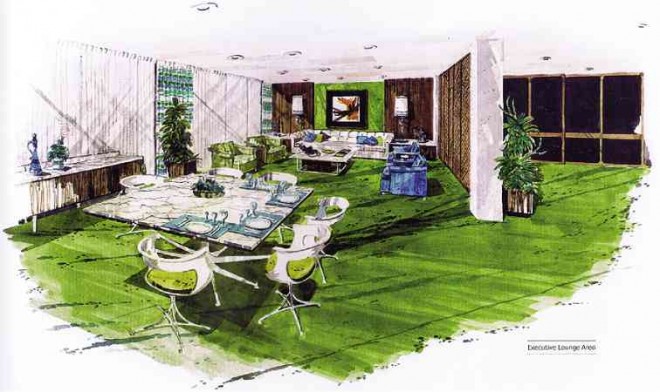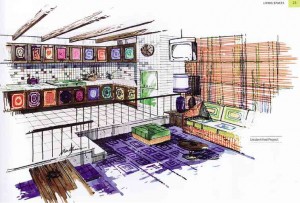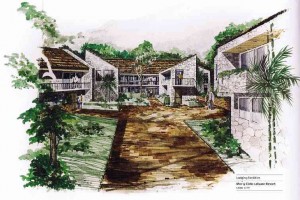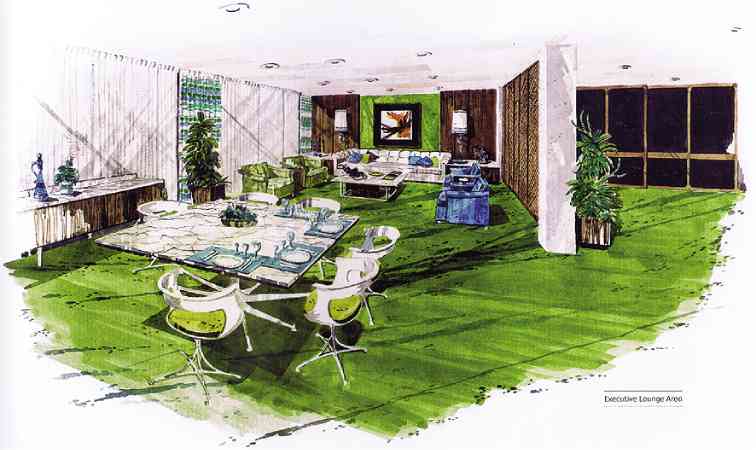

Wili Fernandez stands tall as one of the pillars of Philippine design. A visionary in his field, he was among the early design nationalists who was proudly aware of his heritage and who always referenced the Filipino in all of his work.
The Museum at De La Salle University honored him with a publication, “Wili Fernandez, Designer.” Edited by Maya Besa Roxas, the handsome book traces Fernandez’ contribution to Philippine design through an extensive catalogue of his body of work that recently was exhibited at La Salle’s museum.
And quite a catalog it is. Wili’s work range is extensive: from intimate living and resting spaces, corporate work and executive areas, and public spaces, including graphic design and even stained glass windows.
Consisting of watercolor presentation renderings of a quality and artistry no longer used in these days of computer rendering, the amazing detail in each rendering realistically captures the design concept of each project.
Interior designer Edith Oliveros, Wili’s contemporary, writes, “His renderings were legendary. For many years they were the standard for presentation techniques at design schools.”
Looking at the presentation drawings reproduced in the publication, they are, indeed, works of art from a bygone era when architecture and interior design were handcrafted.
Fernandez’ color palate was as bold and as Filipino as his style that was strongly influenced by the colors, forms, and textures of the Philippine south.
He redefined the Maranao deep greens, purples, and maroons, using those colors in his modern interiors, combining textures like woven silk and carpeting, updating traditional shell-inlaid wood carving into decorative elements, discovering lost craft to incorporate in his interiors that always celebrated natural Philippine materials like hardwood, shells, and fabrics.
Dramatic colors
Oliveros continues, “He had a preference for highly dramatic colors: purple, gold, magenta, dark green, and deep blue, much like the colors of a Maranaw food cover or the sails of a vinta along the shores of the Sulu Sea.

“[Wili Fernandez] maintained a style that so clearly reflected what is Filipino in his choice of colors, wall treatments, ceiling details, furniture, fabric and accessories. His distinctive work was easy to spot as it featured items often not available on the mainstream market but gathered from Filipino craftsmen and artisans … ”
At present, of course, construction and furnishing materials can be sourced from all over the world from catalogues and imported into the country.
Still, Fernandez practiced at a time when all materials were locally sourced. All interior design requirements (furniture, fabrics, wall and ceiling detailing and finishing) were handcrafted. It was therefore part of a designer’s job to source out new natural materials and artisans to supply items needed for their projects.
Vanishing crafts revived
Because of his continuing search for Philippine craft, Wili was instrumental in reviving many vanishing crafts through providing the craftsmen a steady market through his interior design requirements.
His wife Doreen Besa Gamboa Fernandez, herself a Philippine cultural icon, said, “Wili’s well-lived life was a constant search—research for his work, a hunt for beauty ad its standards, a quest for significant experience.
“His enthusiasm came from understanding everything that an interior designer must do: Create spaces for actual people to live in, fill them with comfort and efficiency, and make them enclose beauty as well.
“The well-lived life, he showed us, was not just being a bon vivant and enjoying himself. It was part of growth, of his commitment to Philippine design, of his gratitude for the good things which God had blest his world.”
There may not be many Fernandez interiors that have survived the decades in their original form, but should there be, these should be brought to light for people to learn that there indeed is a definite Filipino design identity, that it is not elusive and still very appropriate for 2014.
We have Wili Fernandez to thank for showing us the way.
“Wili Fernandez, Designer” is available at The Museum in De La Salle University. Call 5244611 loc 271; e-mail [email protected].
E-mail the author at pride.place @gmail.com.









































